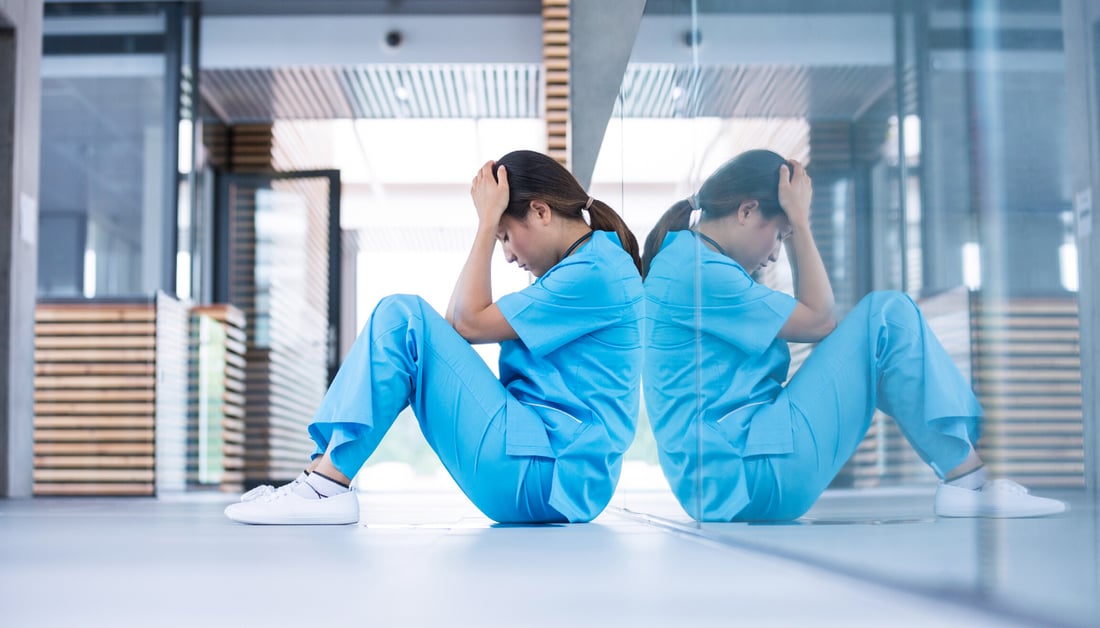Published 6/2/2020
While the healthcare field has never been considered the place to seek a low-stress employment environment, many in this crucial sector are experiencing marked increases in personal stress as the coronavirus has swept across the nation.
To understand and respond to the needs of those involved in the critical care of COVID-19 patients, the Society of Critical Care Medicine (SCCM) has conducted rapid-cycle surveys. The April 7-22 survey was distributed to members of the American Association of Critical-Care Nurses, American College of Chest Physicians, American Thoracic Society, and SCCM, who collectively represent more than 150,000 critical care professionals and clinicians working in ICU settings. Their findings highlight several causes of this heightened stress among critical care clinicians, including:
- Concern about exposure to the coronavirus
- An even greater fear of infecting loved ones
- Ongoing shortages of personal protective equipment (PPE)
- Staffing shortages within their respective facilities
Topping the list for most healthcare professionals is their grave concern about bringing the virus home to their household. To reduce the risk of spreading the virus to their loved ones, many frontline workers have implemented a plan to decontaminate before reconnecting with their families after a work shift. Adaptive measures, as reported by the surveyed clinicians, are:
- 72% change clothes and 51% use hand sanitizer before entering the home
- 64% shower and launder clothing away from the family
- 16% have chosen to self-isolate within the home
- While 12% have made alternate housing arrangements
The necessity for strict biosecurity measures adds another layer of stress, as healthcare workers contend with frustrations and inconveniences such as:
- The physical strain of protective equipment resulting in dehydration, overheating, exhaustion
- Physical isolation that restricts the touching of others, even after working hours
- The need for constant awareness and vigilance regarding infection control procedures
And the tower of stress wobbles with more physical and mental wear-and-tear from:
- The heightened awareness of cold or flu-like symptoms, observed in either the clinician or his/her family members
- The extended incubation period of up to 14 days from exposure to onset of symptoms
- As an “essential employee,” being separated from family during a time of crisis
- The potential conflict between extended work hours and family responsibilities
- The need to stay abreast of continually changing official recommendations and policies
- The feelings of inadequacy that uncertain outcomes and treatment options coupled with relatively high mortality rates can trigger
Critical care clinicians must allow themselves the necessity of self-care, a concept that, for many, will be both complex and challenging. Because they are accustomed to placing the needs of others over their own needs, the idea of caring for one’s self may be viewed as a luxury that cannot be afforded, especially during a crisis. But the exact opposite is true. Because of the extent of the crisis, clinicians must find a way to keep from being overwhelmed.
A focus on these simple steps can chip away at escalating stress.
- Regular check-ins with colleagues to vent/share/commiserate
- Seeking to work in partnerships or teams whenever possible
- Giving yourself permission for brief relaxation/stress management breaks
- Consistent, honest communication with department supervisors
- A commitment to yourself to take time-outs for basic bodily care and refreshment
Many of the suggestions from our article, COVID-19 Stress Hits Everyone-Toddlers to the Elderly-Simple Tips To Help, can benefit the frontline critical care clinician as well. And check out LeaderStat’s article, Get the Most Out of Your Meditation Minutes With These Tips, for specific steps on how to work stress-reducing meditation into your busy day.
Incorporate the strategies that seem the most fitting to your situation. Because you owe it to yourself to make a serious effort to lessen the damaging effects of runaway stress.
*This content is based on information available as of 6/2/20.
-1.png?width=292&height=64&name=LeaderStat%20Logo%20(4)-1.png)


-1.png?width=258&name=LeaderStat%20Logo%20(4)-1.png)